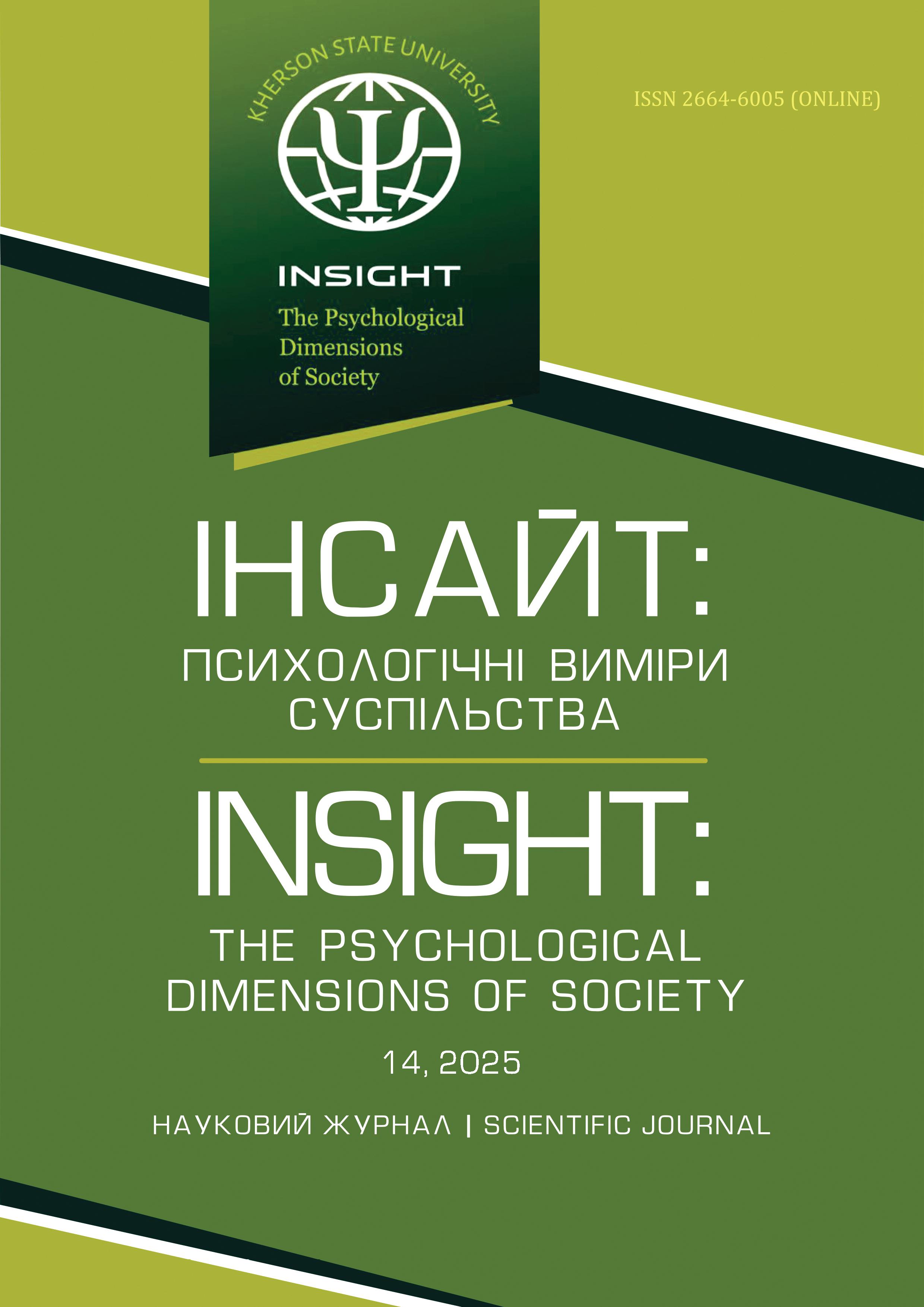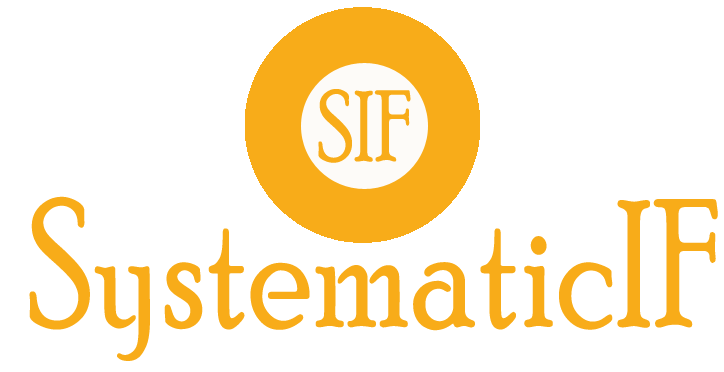Combat and military-professional stress: the influence of emotions and emotional states on the choice of coping strategies
Abstract
The purpose of this empirical research is 1) to study suchcharacteristics of the military cadets’ emotional intelligenceas the ability to identify and manage their emotions;2) to analyze the correlation between preferencefor coping strategies used by military cadets dealing withcombat and military-professional stress and emotionsexperienced by these cadets. Materials and methods.The study was conducted in April 2022. The respondents were third-year cadets of the Military Institute of Telecommunicationand Information Technologies studyingfor a Bachelor of Military Science in Military Management.The first stage of research was the activation of cadets’experiences owing to catatymically imaginative technique(representations of images) – they were askedto draw symbolic images of their ordeals. In the secondstage we used self-report technique. The cadets wereasked to describe their emotions towards the eventsthey had experienced and the actions they took to createa balance between themselves and the external situation.The results were analyzed through descriptive statisticsand Pearson’s correlation coefficient analysis. Results.22.0% of the cadets failed to understand and identifytheir emotions – they were unable to name their emotionsregarding the events they experienced and to drawsymbolic images of their experiences. 78.0% of the cadetswere able to identify their emotions. The cadets experiencedcomplex emotions, but in which it was possible todistinguish such basic components: anxiety, anger, apathyand hope. A total of 32 emotions were listed. This fact canindicate cadets’ clear understanding of their emotionalstate through the pressure of some emotions. The choiceof coping strategies was made on the basis of optimistic/pessimistic interpretation of a stressful situation. Conclusions.The impact of the following factors needs tobe taken into account for studying servicemen’ ability toexpress and manage their emotions: 1) an integral partand key normative component of military subculture isemotion suppression and emotional avoidance, whichmay be adaptive in the short term when other strategiesare not available; 2) there is a danger of chronic,overwhelming combat and military-professional stress,which is associated with the specifics of military activity;3) there is the risk of occurrence of a stress-related problemswith feeling emotions (alexithymia), in which thereare a deterioration of symbolizing capability, a growingtendency towards concrete, logical thinking on the backgroundof deficiency of emotions; the risk of developmentof a psychological condition of an emotional storm, whenemotions take over so that it is difficult to handle them,or an emotional condition of nervous exhaustion, depressionand indifference to what is happening. Therefore,the study of the emotional intelligence of military personnelrequires the development of special tools. Thereis a significant correlation between preference for copingstrategies used by military cadets dealing with combatand military-professional stress and emotions experiencedby these cadets.
Downloads
References
Albesher, S. A., & Alsaeed, M. H. (2015). Emotional intelligence and its relation to coping strategies of stressful life events among a sample of students from the college of basic education in the state of Kuwait. Journal of Educational & Psychological Sciences, 16(04), 273-395. https://doi.org/10.12785/jeps/160409
Alosaimi, F. (2016). Work-Related Stress and Stress-Coping Strategies among Patients’ Companions at a Tertiary Care Hospital in Saudi Arabia. Journal of Psychiatry, 19. https://doi.org/10.4172/2378-5756.1000374
Barrett, F. J. (1996). The organizational construction of hegemonic masculinity: The case of the US Navy. Gender, Work & Organization, 3, 129-142.
Barrett, L.F., Gross, J., Christensen, T.C., & Benvenuto, M. (2001). Knowing what you're feeling and knowing what to do about it: Mapping the relation between emotion differentiation and emotion regulation. Cognition and Emotion, 15(6), 713-724. https://doi.org/10.1080/02699930143000239
Beal, D.J., Weiss, H.M., Barros, E., & MacDermid, S.M. (2005). An Episodic Process Model of Affective Influences on Performance. Journal of Applied Psychology, 90(6), 1054-1068. https://doi.org/10.1037/0021-9010.90.6.1054
Bond, A.L. (2016). Trait Emotional Intelligence Differences in Pre-Career and Mid-Career United States Military Leaders. Doctor’s thesis. Auburn.
Borys, B., Majkowicz, M., & Majkowicz, H. (2003). Radzenie sobie ze stresem w róznych grupach słuzb ratowniczych [Coping with stress in various rescue groups]. Psychiatria polska, 37(2), 337-348.
Braswell, H., & Kushner, H.I. (2012). Suicide, social integration, and masculinity in the U.S. military. Social science & medicine, 74(4), 530-536. https://doi.org/10.1016/j.socscimed.2010.07.031
Bryan, C. J., Hernandez, A. M., Allison, S., & Clemans, T. (2013). Combat exposure and suicide risk in two samples of military personnel. Journal of clinical psychology, 69(1), 64-77. https://doi.org/10.1002/jclp.21932
Carver, C.S. (2011). Coping. In R. J. Contrada, & A. Baum (Eds.), The handbook of stress science: Biology, psychology, and health (pp. 221-229). Springer Publishing Company.
Fteiha, M., & Awwad, N. (2020). Emotional intelligence and its relationship with stress coping style. Health Psychology Open, 7(2). http://doi.org/10.1177/2055102920970416
Goleman, D. (2000). Emotional intelligence: Issues in paradigm building. In D. Goleman, & C. Cherniss (eds.), The Emotionally Intelligent Workplace: How to Select for, Measure, and Improve Emotional Intelligence in Individuals, Groups, and Organizations (pp. 1-13). San Francisco, CA: Jossey-Bass.
Grandey, A. A. (2000). Emotional regulation in the workplace: A new way to conceptualize emotional labor. Journal of Occupational Health Psychology, 5(1), 95-110. https://doi.org/10.1037/1076-8998.5.1.95
Grandey, A. A., & Melloy, R. C. (2017). The state of the heart: Emotional labor as emotion regulation reviewed and revised. Journal of Occupational Health Psychology, 22(3), 407-422. https://doi.org/10.1037/ocp0000067
Gross, J. J. (1998). Antecedent- and response-focused emotion regulation: divergent consequences for experience, expression, and physiology. Journal of personality and social psychology, 74(1), 224-237. https://doi.org/10.1037//0022-3514.74.1.224
Gross, J.J., & Thompson, R.A. (2007). Emotion Regulation: Conceptual Foundations. In J. J. Gross (Ed.), Handbook of Emotion Regulation (pp. 3-24). New York: Guilford Press.
Hautzinger, S., & Scandlyn, J. (2014). Beyond post-traumatic stress: Homefront struggles with the wars on terror. Walnut Creek, CA: Left Coast Press.
Hromova, H.M. (2020). Intolerance of uncertainty in seriously injured veterans: a comparative analysis. Insight: the psychological dimensions of society, 4, 29-41. http://doi.org/10.32999/2663-970X/2020-4-2
Kahneman, D., Krueger, A. B., Schkade, D. A., Schwarz, N., & Stone, A. A. (2004). A survey method for characterizing daily life experience: the day reconstruction method. Science (New York, N.Y.), 306(5702), 1776-1780. https://doi.org/10.1126/science.1103572
Kerasidou, A., & Horn, R. (2016). Making space for empathy: supporting doctors in the emotional labour of clinical care. BMC Medical Ethics, 17(8), 1-5. http://doi.org/10.1186/s12910-016-0091-7
Lazarus, R. S., & Folkman, S. (1984). Stress, appraisal and coping. New York: Springer Publishing Company. Malinauskas, R., Saulius, T., & Kaufmanas, G. (2020). Emotional Intelligence and Stress Coping Strategies Among Students of Physical Education and Sport Study Programs. Baltic Journal of Sport and Health Sciences, 4. http://doi.org/10.33607/bjshs.v4i115.820
Mayer, J. D., Salovey, P., & Caruso, D. R. (2004). Emotional intelligence: Theory, findings, and implications. Psychological Inquiry, 15(3), 197-215. https://doi.org/10.1207/s15327965pli1503_02
Mi-ran, K., & Su-Jeong, H. (2015). Nursing students’ emotional intelligences and coping strategies. Advanced Science and Technology Letters. Healthcare and Nursing, 88, 53-56. http://dx.doi.org/10.14257/astl.2015.88.11
Montvilaitė, G., & Antiniene, D. (2020). Emotional Intelligence and Stress Coping Strategies of Medical Residents. Baltic Journal of Sport and Health Sciences, 4. http://doi.org/10.33607/bjshs.v4i115.818
Moradi, A., Pishva, N., Ehsan, H.B., et al. (2011). The relationship between coping strategies and emotional intelligence. Procedia-Social and Behavioral Sciences, 30, 748-751. http://doi.org/10.1016/j.sbspro.2011.10.146
Noorbakhsh, S.N., Besharat, M.A., & Zarei, J. (2010). Emotional intelligence and coping styles with stress. Procedia – Social and Behavioral Sciences, 5, 818-822.
O’Connor, P., Nguyen, J., & Anglim, J. (2016). Effectively coping with task stress: A study of the validity of the Trait Emotional Intelligence Questionnaire–Short Form (TEIQue–SF). Journal of Personality Assessment, 99(3), 304-314. https://doi.org/10.1080/00223891
Oerlemans, W. G. M., & Bakker, A. B. (2013). Capturing the moment in the workplace: Two methods to study momentary subjective well-being. In A. B. Bakker (Ed.), Advances in positive organizational psychology (pp. 329-346). Emerald Group Publishing. https://doi.org/10.1108/S2046-410X(2013)0000001017
Paradiso, S., Beadle, J. N., Raymont, V., & Grafman, J. (2016). Suicidal thoughts and emotion competence. Journal of Clinical and Experimental Neuropsychology, 38(8), 887–899. https://doi.org/10.1080/13803395.2016.1172558
Pekaar, K. A, van der Linden, D, Bakker, A.B, & Born, M. Ph. (2020). Dynamic self- and other-focused emotional intelligence. Journal of Research in Personality, in press, 86. http://doi.org/10.1016/j.jrp.2020.103958
Petrides, K., Mikolajczak, M., Mavroveli, S., Sanchez-Ruiz, M, Furnham, A., & Pérez-González, J. (2016). Developments in Trait Emotional Intelligence Research. Emotion Review, 8. http://doi.org/10.1177/1754073916650493
Quigley, K. S., & Feldman Barrett, L. (1999). Emotional learning and mechanisms of intentional psychological change. In J. Brandtstadter & R. M. Lerner (Eds.), Action and development: Origins and functions of intentional self-development (pp. 435-464). Thousand Oaks, CA: Sage.
Salovey, P., & Mayer, J.D. (1990). Emotional Intelligence. Imagination, Cognition and Personality, 9(3), 185-211. https://doi.org/10.2190/DUGG-P24E-52WK-6CDG
Sarabia-Cobo, C. M., Suárez, S. G., Menéndez Crispín, E. J., Sarabia Cobo, A. B., Pérez, V., de Lorena, P., Rodríguez Rodríguez, C., & Sanlúcar Gross, L. (2017). Emotional intelligence and coping styles: An intervention in geriatric nurses. Applied nursing research: ANR, 35, 94-98. https://doi.org/10.1016/j.apnr.2017.03.001
Stanley, E. A. (2019). Widen the window: Training your brain and body to thrive during stress and recover from trauma. New York: Avery Books.
Stanley, E. A., & Larsen, K. L. (2021). Difficulties With Emotion Regulation in the Contemporary U.S. Armed Forces: Structural Contributors and Potential Solutions. Armed Forces & Society, 47(1), 77–105. https://doi.org/10.1177/0095327X19848018
Weiss, H. M., & Cropanzano, R. (1996). Affective Events Theory: A theoretical discussion of the structure, causes and consequences of affective experiences at work. In B. M. Staw & L. L. Cummings (Eds.), Research in organizational behavior: An annual series of analytical essays and critical reviews, Vol. 18, (pp. 1-74). Elsevier Science/JAI Press.
Authors who publish with scientific journal agree to the following terms:
• All scientific papers may be freely copied and distributed on any medium and in any format, provided that the references to the initial data of the scientific work are indicated.
• Authors retain copyright and grant the journal right of first publication with the work simultaneously licensed Creative Commons Attribution License .
• Authors are able to enter into separate, additional contractual arrangements for the non- exclusive distribution of the journal’s published version of the work (institutional repository, your website, monograph), with an acknowledgement of its initial publication in this journal.





































